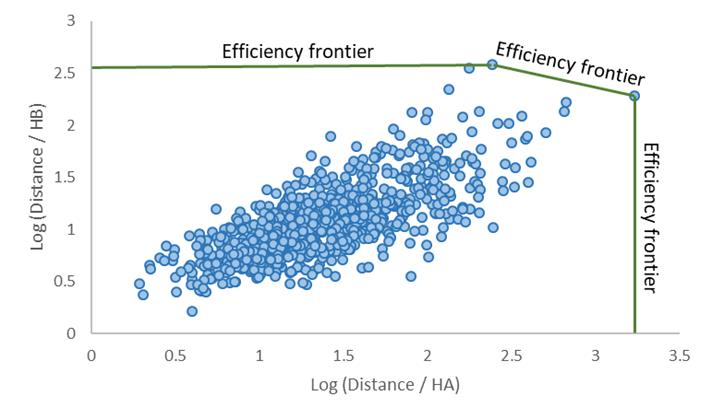
Smooth driving is the most critical dimension of the general notion of eco-driving and may have a potential impact on accident risk. Nonetheless, research thus far has not shed light on the relationship between smooth driving and safety-related driving behavior. This paper aims to understand the strength of the relationship between smooth and safe driving. To this end, a methodological approach that combines a trip and driver level analysis is proposed based on the K-Means algorithm for trip clustering and driver evaluation and the Data Envelopment Analysis for safety efficiency evaluation of drivers. Data used are recorded during a naturalistic driving experiment with more than 760 participating drivers. Results indicate that there exist 3 clusters of different levels of smooth driving on a trip level. Drivers’ efficiency evaluation demonstrated that there are significant differences in attributes of most and least efficient drivers. A strong relationship is then revealed between overall safe efficiency on a driver level and smooth driving on a trip level by estimating Kendall’s tau and Spearman’s rank correlation of the two rankings (safe and smooth driving). These findings show a potentiality for predicting the occurrence of safe driving through smoothness characteristics observed on a trip level and vice versa and could be exploited to provide personalized feedback to drivers to improve their driving behavior in terms of smoothness and safety.
| ID | pc501 |
| Presentation | |
| Full Text | |
| Tags |







